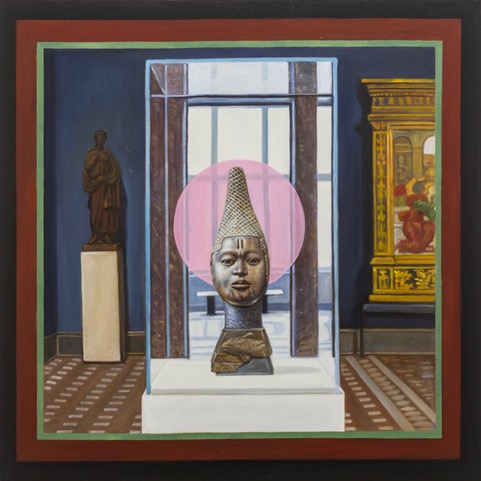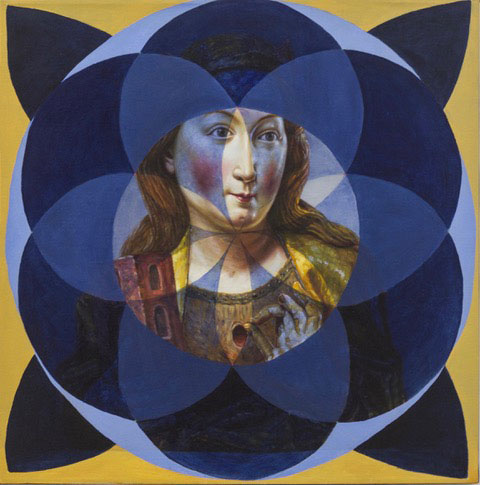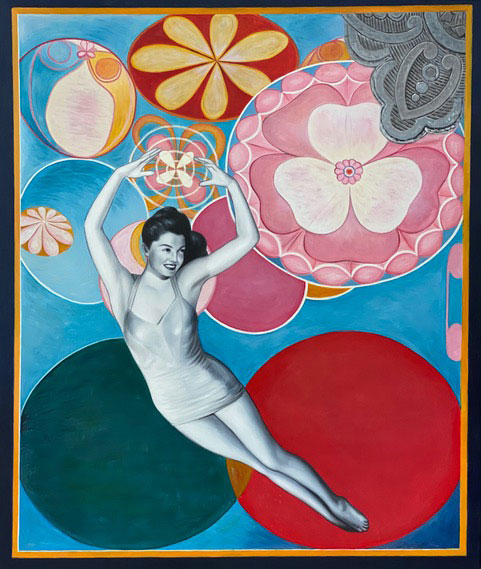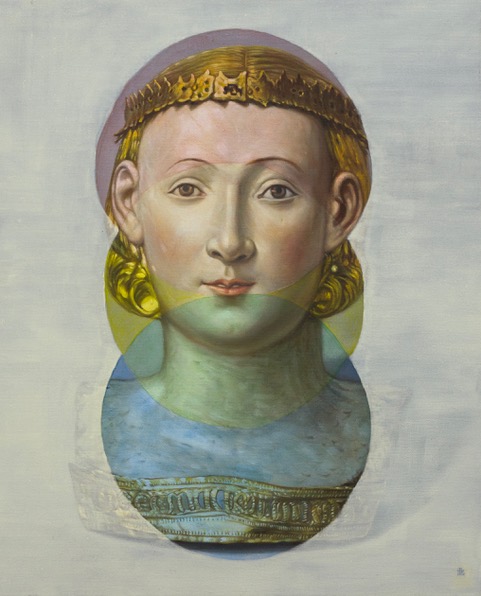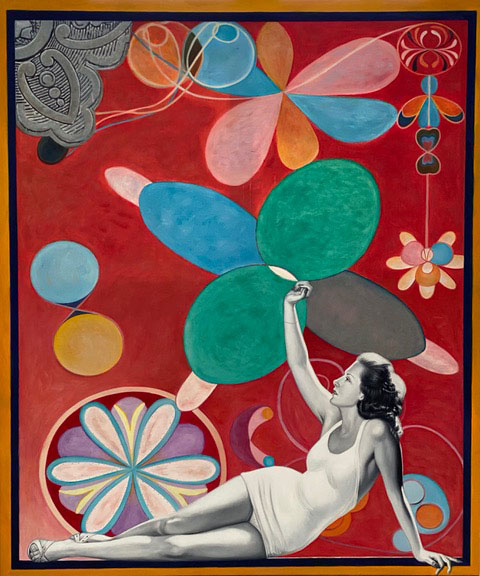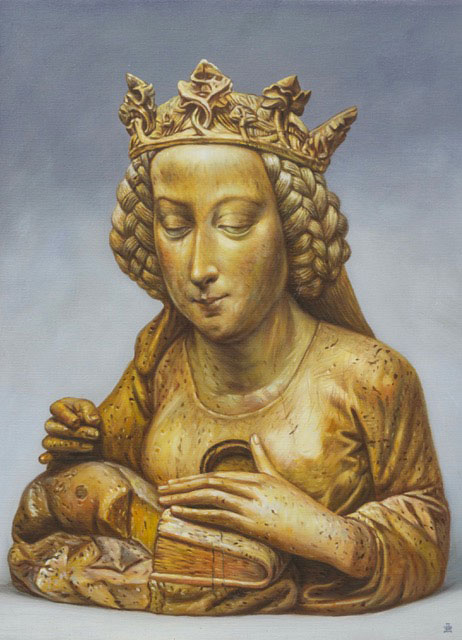Alexis Zambrano
Biography
Lives and Works
New York, NY / Monterrey, MX.
About
Originally from Monterrey, Mexico, Alexis Zambrano awakened an early interest in art through collecting. His interest soon grew into a life-long passion for not only collecting but also for creating. By age twelve, Alexis fully immersed himself into the art world and started apprenticing with artists Aldo Chaparro, Juan Torres & Ximena Subercasaux.
Zambrano followed with a BFA in Architectural Design from
Parsons the New School for Design, and has made New York City his home since 2008. In his first solo exhibition, Interior Artscapes, Alexis showcased his art by curating a series of pieces that compromises his ideal collections.
Through a process that begins by collaging images from auction house catalogues and juxtaposing them in old European salons, the artist then paints his unique vision of collections that otherwise could never be enjoyed. More recently his works have architectural influences and make reference to characters in different time periods
Alexis Zambrano’s work investigates the different dimensions of our existence, physical planes versus the cosmic and spiritual; the conscious vs the unconscious. Through his practice he references the works of old masters, architecture, contemporary art and nature; analyzing their purpose and evolution, these materialize through drawing, painting and sculpture in juxtaposed and altered settings. Originally from Monterrey Mexico, Zambrano lives and works in New York since 2008.
EXHIBITIONS
2019 Fifty Years in Hollywood, PINTO International; Manila, PH. (Próximo) 2019 Artist Residency, Palazzo Monti; Brecia, IT.
2019 Fifty Years in Hollywood, PINTO International; New York, US.
2019 Zona MACO, PEANA; Mexico City, MX.
2018 The Shape of Time, PEANA. Monterrey, MX.
2018 The Armory Show, PEANA. New York, US.
2018 SAMPLE, curated by Humberto Moro, Zona MACO. Mexico City, MX.
2018 Zona MACO, PEANA. Mexico City, MX.2017 Zona MACO, PEANA. Mexico City, MX.
2016 Marathon, Group show, PEANA. Monterrey, MX.
2016 Xerocole Dreams, PEANA. Monterrey, MX.
2016 Zona MACO, PEANA. Mexico City, MX.
2015 Paradise Syndrome, Group show, PEANA. New York, US.
2015 A False Horizon: Art from Latin America, Group show, PEANA. New York, US. 2015 Lithium: Historia de dos Espacios, Impakto Galeria. Lima, PE.
2015 Oxymoron, PEANA. Mexico City, MX.
2015 Profil Perdu, Karen Huber Galeria. Ciudad de México, MX.
2014 Interior Artscapes, PEANA. New York, MX.
COLLECTIONS
AMA Foundation, Chile
The Shape of Time
Exhibition in Monterrey, 2018
In George Kubler’s influential book The Shape of Time (1962), the noted art historian proposes that the objects around us, which we obsessively accumulate, “mark the passage of time with far greater accuracy than we know.” According to Kubler, objects, be they works of art or functional tools, live many more lives than their makers often envision. Consequently, these lives build on one another to form the strata of borrowed ideas that define culture. Alexis Zambrano’s new works recognize the myriad lives of objects, emphasizing the shifting nature of their value and function over time, while questioning the ways in which western institutions commodify and colonize the sacred.
Since his formative years, Zambrano has hoarded oddities, objets d’art, and the unwanted antiques of dissolved estates, becoming obsessed with the transformation of religious objects across cultures. This almost manic preoccupation manifests in his new work Untitled (Mudejar Ceiling) (2018), a meticulous oil painting of a cathedral ceiling in Granada, Spain. The intricate geometric tessellations, rendered here by Zambrano’s careful hand, reveal Alhambra cathedral’s past life as a mosque. A place of worship first built by the Moors of Al-Andalus, medieval Spaniards transformed the building’s function and ritual purpose after the Reconquista, yet the physical architecture itself remains largely unadulterated. Architectural spaces like museums and churches recur frequently in Zambrano’s work; but instead of simply painting an iconic building, he uses the painted ceiling to reframe the gallery space. Installed on the ceiling, the painting suggests a divine context for the other works in the exhibition, repositioning the white cube of contemporary art as a new kind of cathedral or — from a more profane perspective — a place of ritual and convention.
No matter the culture of origin, the divine effigies in Zambrano’s paintings face the same fate: acquisition and entombment into one of the preeminent Enlightenment enterprises, the encyclopedic museum. Rather than attempting to memorialize or preserve the life of an object within a linear or monolithic account of history, Zambrano’s work astutely reinscribes relics and other holy things into the flow of time. In All Seeing Eye (2018), Zambrano layers a faithful reproduction of a reliquary bearing the imagined likeness of Saint Teresa with a series of colorful concentric circles, suggesting the “original” object’s accrual of ideas, energies, and functions. Transitioning from warm to cool tones, the circles visualize the relic’s various, interconnected lifecycles. Throughout the middle ages, pious kings and serfs alike coveted the remains of the canonized, creating economies of relic-trafficking, theft, worship, and fraud. This reliquary now enjoys a new, different life of veneration, as a precious art object in the collection of the Metropolitan Museum of Art. Replication and modification ascribe new dimensions and values to this object, and Zambrano fashions yet another life to the reliquary. It becomes the research material and subject matter that underpins his art. Anubis (2016) extends Zambrano’s ongoing inquiry into how the divine becomes comprehensible, secularized, and conserved to dynastic Egypt. The statuette, excavated from the grave of Tutankhamun, keeps watch at the Egyptian Museum in Cairo, itself a contested site of colonial history. The Anubis, intended to eternally guard a tomb, becomes interred by frames of black, gold, green and white.
Kubler reminds us that “human desires in every present instant are torn between the replica and the invention.” Zambrano’s work invents with replicas and replicates inventions, asking viewers to contemplate the afterlife of an object. As Zambrano’s art reveals, the afterlife of an object is often inseparable from commodification. What, then, is the true cost of eternity?
By Owen Duffy

